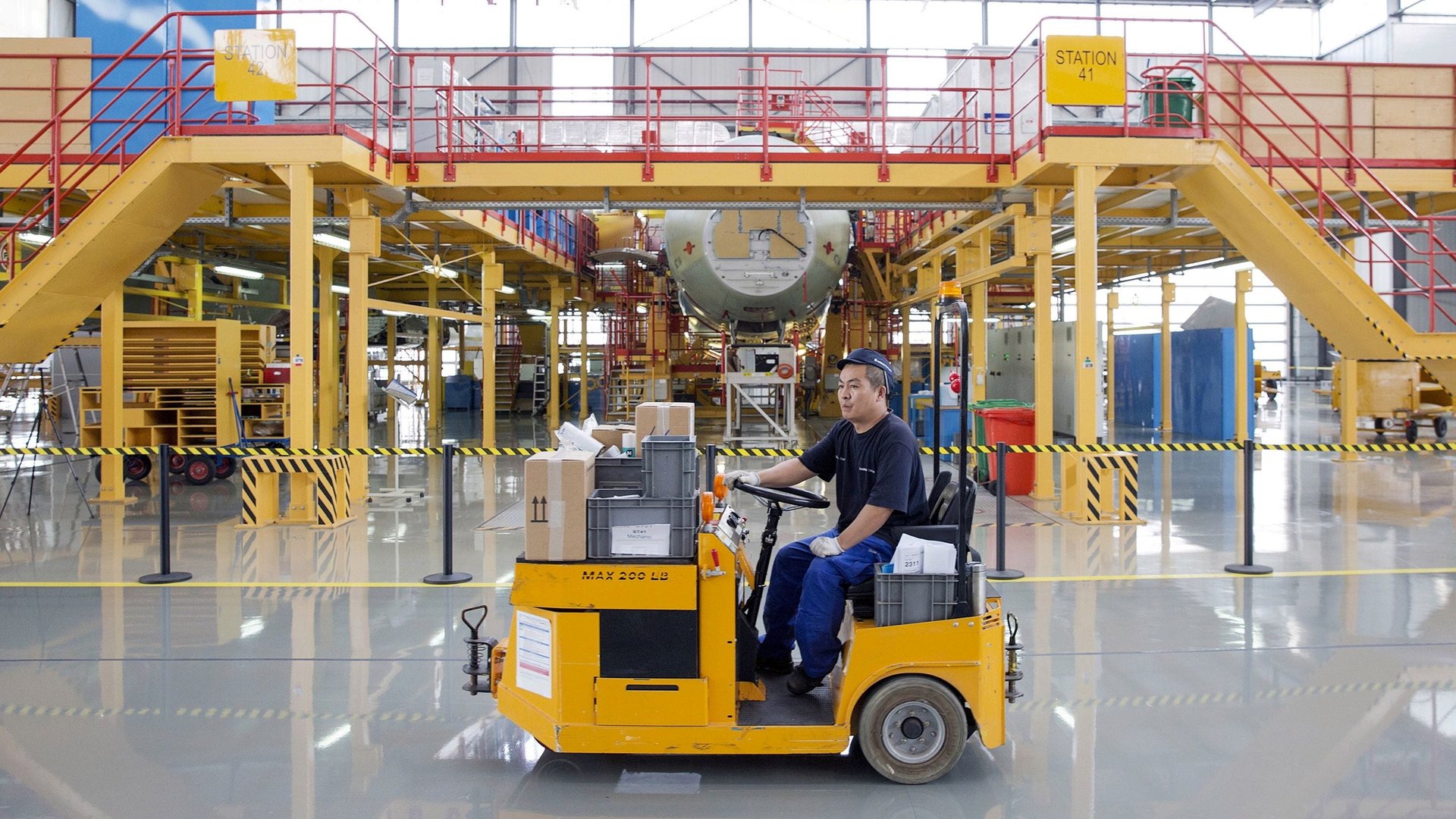Another day, another set of cautionary economic numbers for China
Numbers released so far this month show China’s economy running out of steam faster than expected. Upcoming economic data isn’t likely to be reassuring, either.


Numbers released so far this month show China’s economy running out of steam faster than expected. Upcoming economic data isn’t likely to be reassuring, either.
Today’s official Purchasing Managers’ Index, a closely-watched gauge of where manufacturing activity is heading, came in at 50.2, lower than the 50.6 economists had forecast, and a dip from September’s 50.8. Unlike GDP numbers, which are a snapshot of the past, the PMI is an indicator of where the economy is headed—a number above 50 shows expansion, while below 50 indicates a decline in economic activity. PMI asks managers about production, new orders, new export orders, and inventory, among other things. This month’s number is the first one released since the latest tariffs on China went into effect.
The figures come after China missed GDP forecasts for July through September—the first economic growth numbers since the US and China placed 25% tariffs on $34 billion in goods from the other in July. China’s economy grew at 6.5%, its slowest quarterly growth since the financial crisis.
Tomorrow (Nov. 1) the private Caixin/Markit purchasing managers’ index, focused on mid-size and small private firms, will provide a better sense of the mood in those businesses, for whom China’s leader in recent days voiced his support. The last time that index showed a contraction was in May 2017; this time a figure of 49.9 is forecast. The next round of trade figures this month will also be closely watched, after numbers for September appeared to show China weathering the tariffs pretty well. Today’s PMI numbers showed another decline in new export orders.
Although China is repositioning its economy as high-tech one, rather than one driven by low-cost export manufacturing, manufacturing still accounts for nearly 30% of China’s GDP (compared with less than 15% for the US).
Further down the road, January could be a month of gloomy numbers, starting with full-year car sales numbers for 2018. While the automobile industry had hoped for sales growth of 3% in 2018 (paywall), stricter lending rules and fragile consumer confidence due to stock price plunges and higher prices means the country could see its first annual decline since 1990.
Soon after that China’ll reveal fourth-quarter and full-year GDP data for 2018. Those figures are unlikely to be an upside surprise like last January’s numbers, when Beijing announced growth of 6.9%, beating expectations. (Unless there’s a specially bad wave of “statistical corruption.”)
Are missed numbers a sign that Trump’s tariffs are working? Are they likely to make China more amenable to the US’s demands on how to rebalance their economic relationship? That’s what president Donald Trump may be hoping ahead of a meeting with Chinese leader Xi Jinping on the sidelines of the next G20 meeting next month in Argentina. For good measure, he’s again threatening to expand tariffs to cover all of China’s exports if he doesn’t get a good deal.
Economists have cautioned against being too quick to attribute the declining data to trade tensions. Instead they’ve pointed to China’s necessary efforts to reign in risky lending and investment over the last two years, which may have taken a toll on private firms in more ways than one.